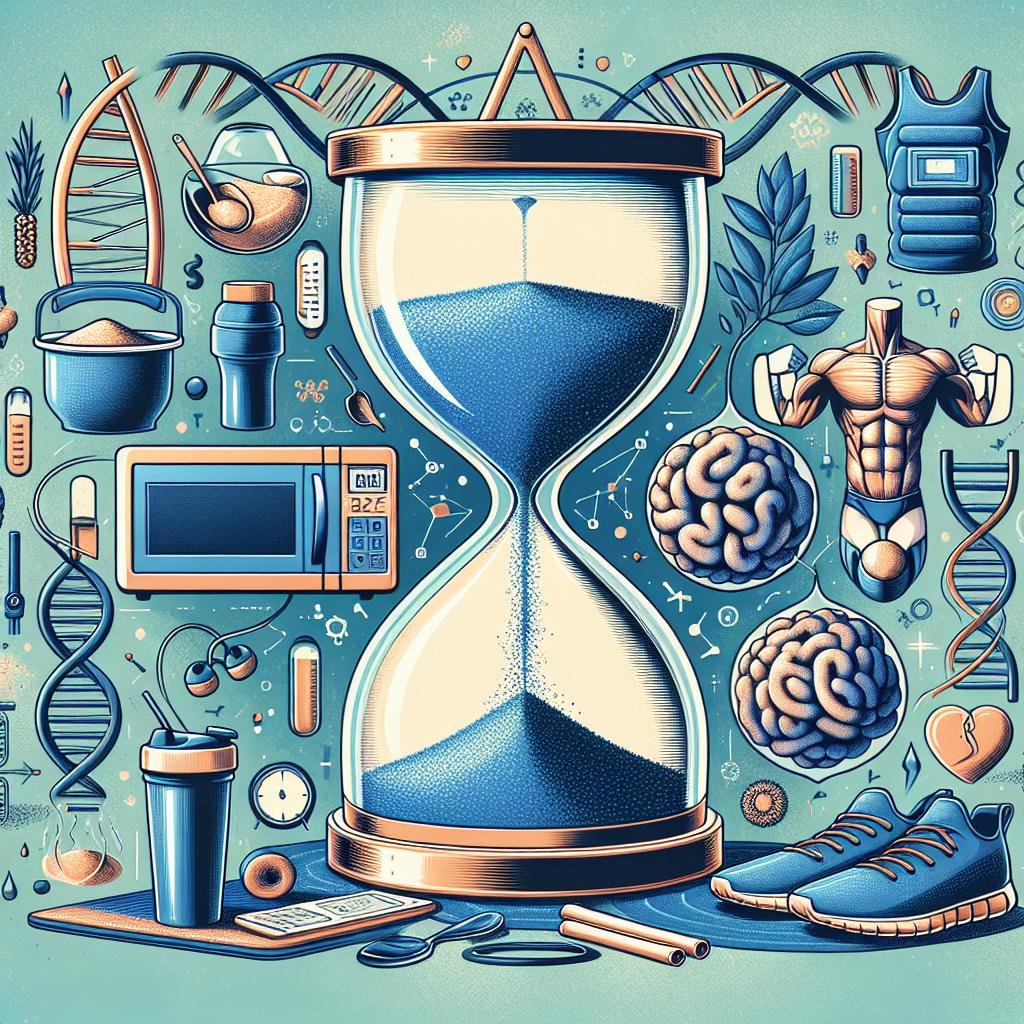Introduction: Sustaining Strength: The Art of Lean Muscle Maintenance During Intermittent Fasting
In a world where wellness trends ebb and flow like the tides, intermittent fasting has emerged as a powerful strategy for many seeking to enhance their health and vitality. But while the benefits of this eating pattern—weight loss, improved metabolic health, and increased mental clarity—are widely celebrated, one concern often looms large: how to maintain lean muscle mass amidst the ebb and flow of fasting periods. For fitness enthusiasts and casual gym-goers alike, the prospect of losing hard-earned muscle can be daunting. However, the journey to preserve your physique doesn’t have to be fraught with challenges. With the right approach, you can master the delicate balance of intermittent fasting while promoting muscle retention. Join us as we explore proven strategies and insights to ensure your fasting regimen complements your fitness goals, allowing you to nourish your body, sustain your strength, and embrace the transformative journey of intermittent fasting—without sacrificing the muscle that supports your endeavors.
Strategies for Nutrient Timing to Support Muscle Retention
To successfully retain lean muscle mass during intermittent fasting, it’s crucial to focus on optimal nutrient timing. Ensuring that your body receives the necessary nutrients right after workouts can enhance recovery and muscle preservation. Aim to consume a balanced meal rich in protein and carbohydrates within 30–60 minutes post-exercise. This timing helps in maximizing muscle repair and growth, enhancing the anabolic response. Additionally, incorporating high-quality protein sources such as chicken, fish, eggs, or plant-based options directly following your workout can significantly contribute to muscle retention.
Furthermore, planning your meals thoughtfully throughout your eating window can also make a difference. Consider these strategies to optimize nutrient intake:
- Distribute protein intake evenly across meals.
- Incorporate healthy fats to support hormone production.
- Stay hydrated, as fluids play a vital role in muscle function.
Moreover, setting a consistent eating schedule can help your body adapt better to your fasting protocol. Here’s a simple table you can use to track your nutrient timing:
| Time | Meal | Nutrients |
|---|---|---|
| 12:00 PM | Lunch | Grilled chicken, quinoa, and spinach |
| 3:00 PM | Snack | Greek yogurt with berries |
| 6:00 PM | Dinner | Baked salmon, sweet potato, and broccoli |
| 8:00 PM | Pre-fast Snack | Protein shake and almond butter |

Incorporating Resistance Training into Your Intermittent Fasting Routine
can be a game changer for maintaining lean muscle mass. Focused strength sessions not only help prevent muscle loss but also enhance fat oxidation, maximizing the benefits of your fasting periods. Aim for 2-4 resistance training sessions per week, ensuring you target all major muscle groups. This can be achieved through:
- Free weights: Incorporate exercises such as squats, deadlifts, and bench presses.
- Bodyweight exercises: Push-ups, pull-ups, and lunges are excellent for building strength.
- Resistance bands: These provide versatility and are great for home workouts.
Timing your resistance training in relation to your eating windows can significantly influence performance and recovery. If you’re following a 16/8 fasting protocol, consider scheduling workouts just before your eating period begins. This allows you to replenish your muscles with nutrients right after your workout. Below is a sample weekly training schedule to help you stay on track:
| Day | Workout Type | Focus |
|---|---|---|
| Monday | Upper Body | Chest, Back, Arms |
| Wednesday | Lower Body | Legs, Glutes |
| Friday | Full Body | All Major Muscle Groups |
| Saturday | Core and Flexibility | Core Strength, Stretching |

Essential Macronutrient Balancing for Lean Muscle Preservation
Maintaining lean muscle mass during intermittent fasting requires a strategic approach to nutrient intake, particularly in balancing macronutrients. Typically, protein plays an essential role in muscle preservation, and it is crucial to ensure a sufficient intake within your eating window. This can be achieved by including high-quality sources of protein such as chicken, fish, beans, and legumes. Consider these essentials:
- Prioritize Protein: Aim for 1.2 to 2.2 grams of protein per kilogram of body weight.
- Incorporate Healthy Fats: Avocado, nuts, and olive oil support overall health and hormone production.
- Choose Complex Carbohydrates: Opt for whole grains and veggies to fuel workouts effectively.
Moreover, understanding the timing of macronutrient intake during your feeding period is vital. Creating balanced meals that distribute protein throughout the day can support muscle synthesis and recovery. Consider employing a structured meal plan, where each meal includes a combination of protein, healthy fats, and carbohydrates. Here’s a simplified overview of a balanced approach:
| Meal | Protein Source | Healthy Fats | Carbohydrates |
|---|---|---|---|
| Breakfast | Eggs | Avocado | Oats |
| Lunch | Grilled Chicken | Almonds | Quinoa |
| Dinner | Salmon | Olive Oil | Sweet Potatoes |

Hydration and Recovery: Key Factors in Muscle Maintenance During Fasting
During fasting periods, the importance of staying adequately hydrated cannot be overstated. Water plays a crucial role in several physiological functions that are essential for muscle maintenance. Proper hydration helps to optimize blood flow, which in turn ensures that nutrients are efficiently delivered to muscles, aiding in recovery and repair. This is particularly vital when your body is under the stress of a calorie deficit, as hydration can mitigate muscle breakdown. Furthermore, electrolyte balance is essential in maintaining muscle function and avoiding cramps. Prioritizing hydration not only supports muscle integrity but also enhances overall energy levels, allowing you to maintain your workout intensity and performance.
To further enhance recovery and muscle maintenance during fasting, consider integrating electrolyte-rich drinks and foods into your refeeding window. Here are a few tips to remember:
- Drink plenty of water: Aim for at least 2-3 liters a day, adjusting based on activity levels.
- Incorporate electrolytes: Use supplements or natural sources like coconut water and bone broth.
- Monitor signs of dehydration: Fatigue, headache, or dizziness can indicate a lack of fluids.
By focusing on hydration and replenishing vital nutrients, you can help minimize the impact of intermittent fasting on your muscles while maximizing recovery capabilities.
Wrapping Up
maintaining lean muscle mass while navigating the intricacies of intermittent fasting is not only achievable but also rewarding. By combining strategic meal planning, the right kind of exercise, and a keen awareness of your body’s needs, you can foster a physique that is both strong and resilient. As you embark on this journey, remember that consistency is key—every meal matters, and every workout counts. Embrace the process, listen to your body, and adapt your strategies as needed. With patience and commitment, you’ll not only sustain your muscle mass but likely discover new heights of performance and well-being. Here’s to a balanced approach, where health and vitality flourish in harmony with your fasting routine. Happy fasting!

